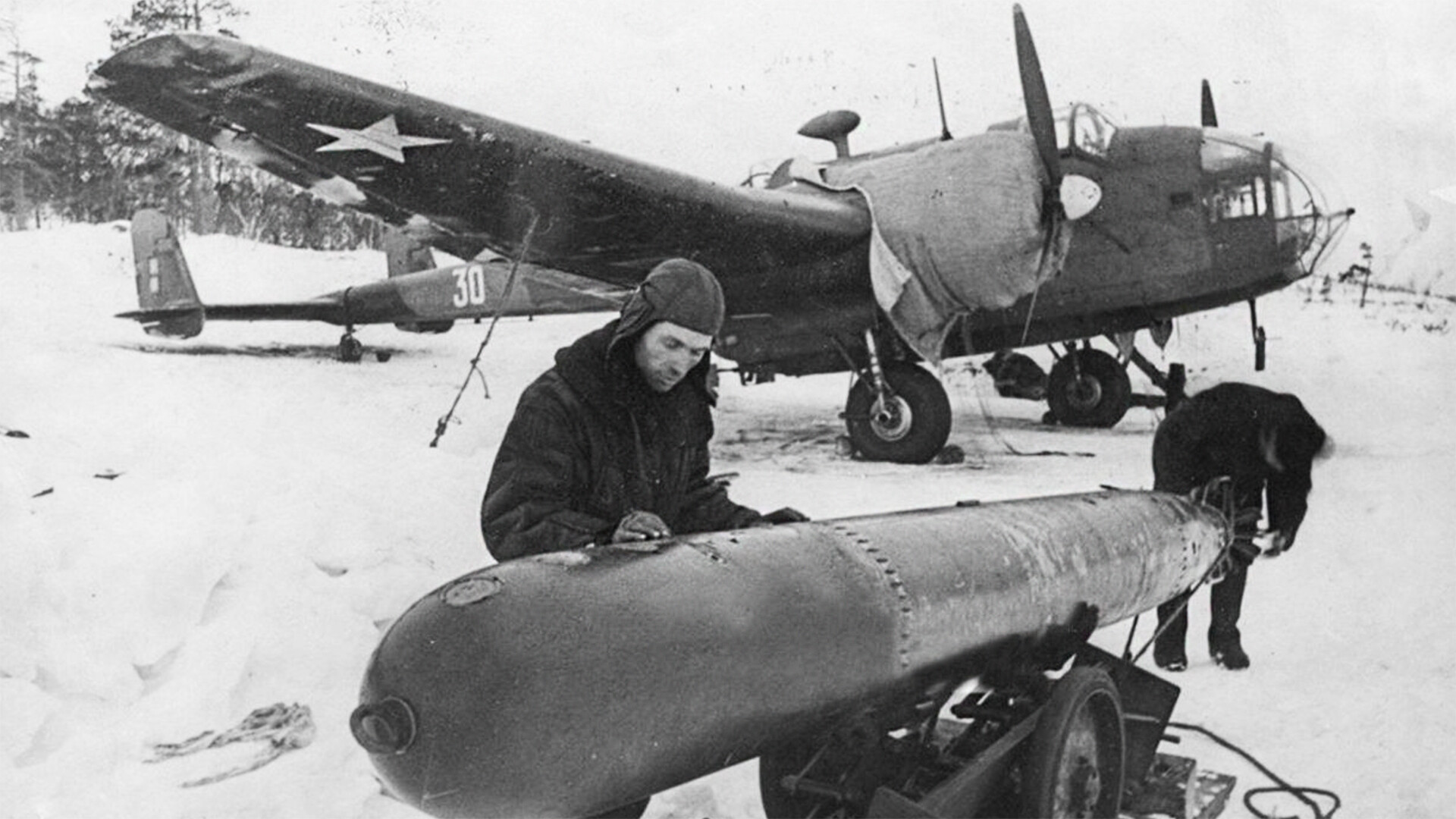
A 'Hampden' torpedo bomber of the Soviet Northern Fleet.
Archive photoOver the course of World War II, the Soviet Union received about 3,700 bombers from its Western allies as military aid. Almost all of them were American made; however, there were also just over twenty specifically British aircraft.
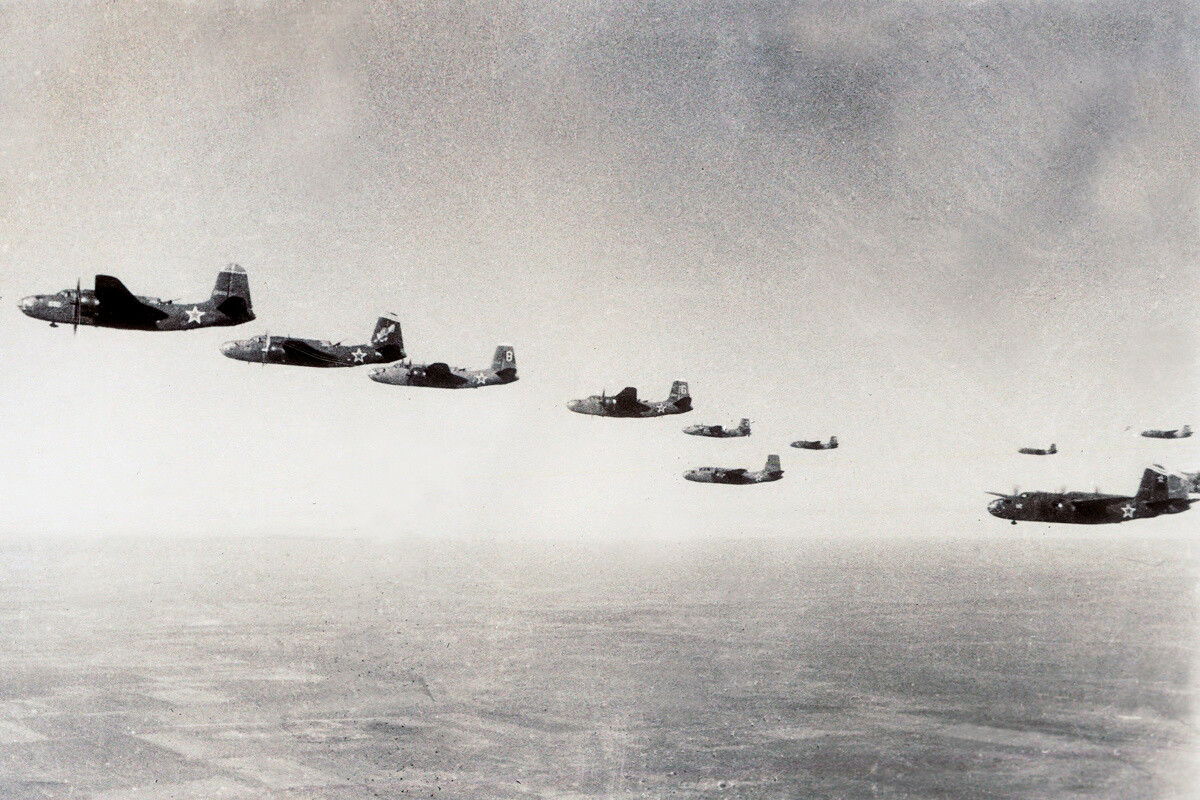
Soviet A-20 bombers.
Igor BubinDuring the war years, about 2,800 American Douglas A-20 ‘Havoc’ / DB-7 ‘Boston’ bombers in various modifications arrived in the USSR. This meant that the Red Army Air Force ended up with even more than the U.S. Armed Forces at the time.
Swift (up to 510 km/h), mobile, easy-to-pilot with good maneuverability, the bomber was to the Soviet pilots’ liking. One of them, Grigory Evdokimov, remembered: “It’s reliable, very reliable. It was even able to carry bombs with just one engine. Horizontally.”
The A-20 was distinguished for its high levels of comfort: a spacious cabin, comfortable armored seats and great visibility for the pilot and the navigator. The aircraft was also fully equipped with modern navigational and radio-equipment.

In terms of downsides, the combat aircraft had weak defensive armament. In the USSR, the bomber was re-equipped: the American 7.62-mm machine guns were swapped for large-caliber 12.7-mm UBT machine guns or sometimes even for 20-mm ShVAK cannons. That, however, cost the aircraft some speed.
The Red Army used the A-20 as reconnaissance aircraft, for bombing campaigns and as night raiders. They did especially well in naval aviation, where a part of them was converted to torpedo bombers.
The A-20 became a part of the Baltic, Northern, Black Sea and Pacific Fleets. They successfully sank ‘Niobe’ anti-aircraft cruisers, ‘Schlesien’ battle cruisers, ‘Orion’ auxiliary cruisers, as well as a multitude of the enemy’s destroyers and transport ships.

Soviet B-25B Mitchel bomber.
United States Army Air ForceThe first American B-25 ‘Mitchell’ bombers arrived in the Soviet Union in 1942. In total, the Air Force of the Red Army received about 860 in different modifications.
“The first pilot’s impression of the machine wasn’t all that good. It was immediately dubbed a ‘cuttlefish’,” pilot Alexander Dudakov remembered. “But, having piloted it, we changed our attitude. The aircraft was really easy to maneuver, with great frontal visibility. Piloting during take-off, in the air and when landing was so smooth that it allowed us to quickly bring young pilots to combat readiness. From all the types of aircraft I piloted, the B-25 was the most accessible in terms of piloting technique.”
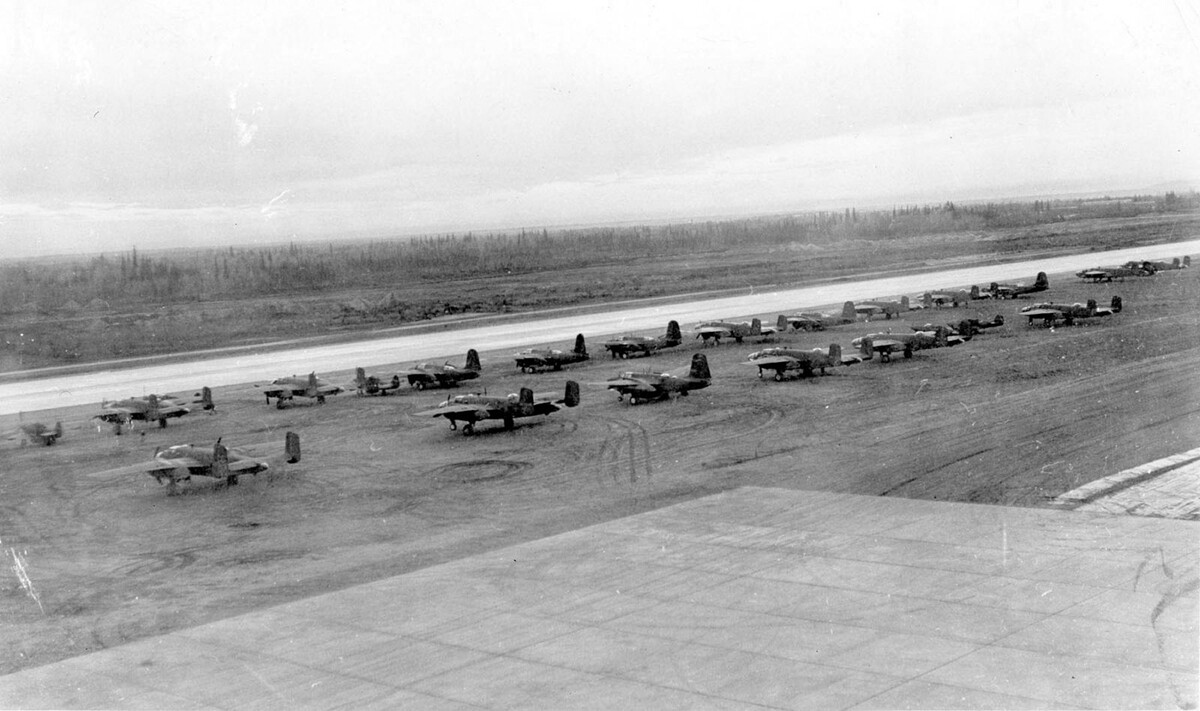
B-25 'Mitchell', A-20 'Boston' bombers and P-39 'Aerocobra' fighters, prepared for delivery to the Soviet Union.
Public DomainThe B-25 began its service in the USSR in front line aviation. However, due to being cumbersome, the aircraft was an easy target for the enemy’s anti-aircraft forces, which led to a lot of casualties.
In the end, the bomber was handed to long-range aviation, where, during its night raids, it could use its great navigational equipment to its full potential, as well as its long range (2,170 km) and formidable bomb carrying capacity (2,800 kg). ‘Mitchells’ were actively used to destroy military infrastructure in the German rear and to raid large industry centers of the Third Reich.
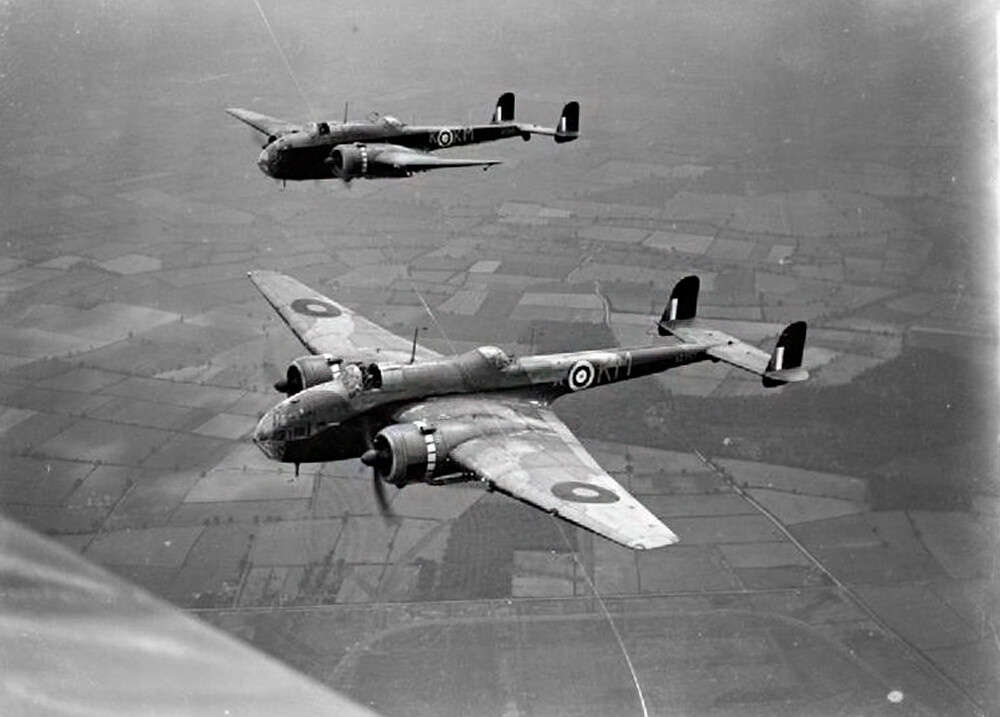
RAF Hp.52 Hampden and Hereford planes.
Imperial War MuseumUnlike its American colleagues, the British HP.52 ‘Hampden’ bombers didn’t manage to prove themselves in any way in the Soviet Union. Even their route to the USSR turned out to be full of problems and obstacles.
More than thirty ‘Hampdens’ (the torpedo-carrying version) departed from Scotland to Murmansk at the beginning of September 1942 to protect the Allies’ Arctic convoy PQ-18. Two aircraft crashed in neutral Sweden, while four were lost in Finnish skies. In addition to it all, one aircraft crashed on the territory of the USSR due to weather conditions and another one was shot down by one of the Soviet ‘Hurricanes’, which mistook it for an enemy.
As a result, only 23 torpedo carriers reached their destination. After the convoy operation ended, the British pilots returned to their homeland, while the aircraft were given to the Soviets. ‘The flying suitcase’, as HP.52 was dubbed in the Royal Air Force, was quite outdated by that time.
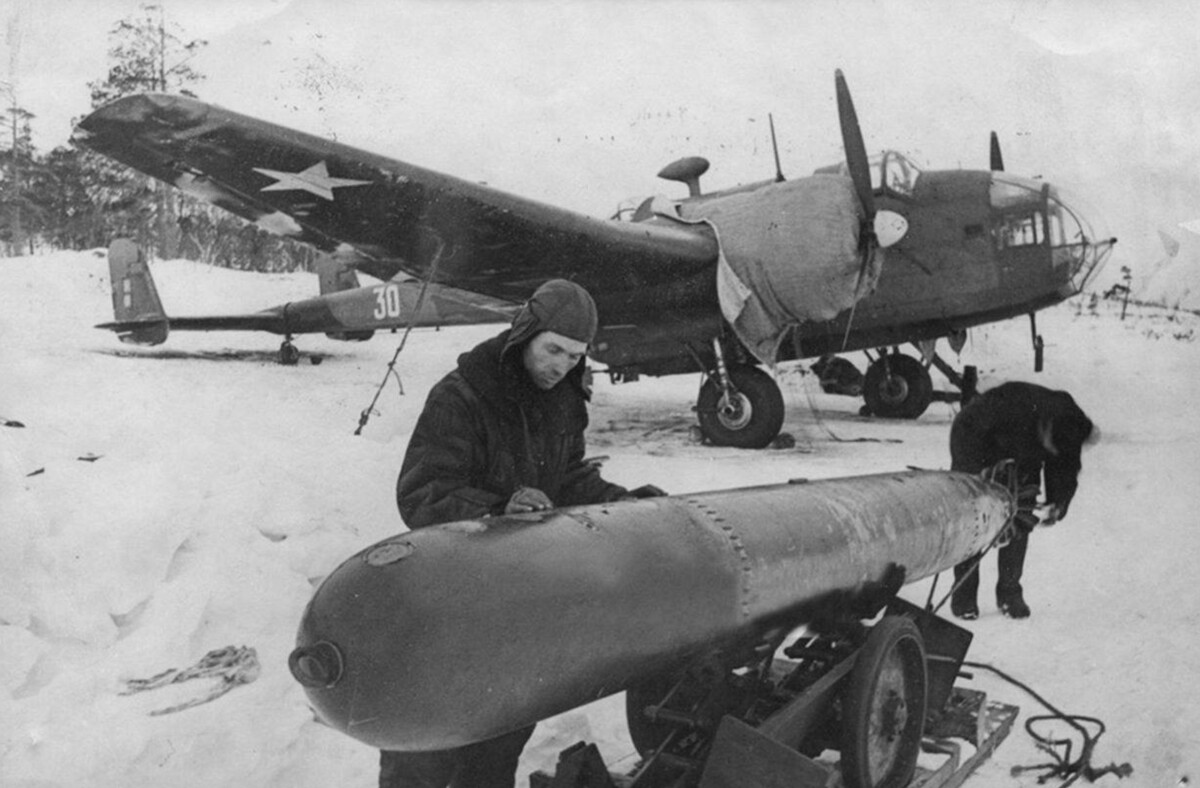
A 'Hampden' torpedo bomber of the Soviet Northern Fleet.
Archive photoThe ‘Hampden’ had a spacious comfortable cabin, but this is where its upsides ended. Soviet specialists had to do a lot of work to improve the aircraft: bolstering its armament, increasing its survivability, decreasing the risk of fire when struck with bullets, etc. However, even after this, the torpedo carrier failed to become a formidable combat machine in Soviet naval aviation.
“Those are not aircraft, but coffins,” pilot Alexey Gusev said about them. “It was scary to pilot one of those. Scary even to approach them. Even their look was… crappy… Those were really bad aircraft. Pilots cursed them, didn’t want to pilot them, but what can you do – war…”

A USAF B-17 bomber.
U.S. Air ForceIn Summer 1941, U.S. President Franklin Roosevelt promised Stalin to soon begin supplying heavy B-17 ‘Flying Fortress’ bombers to the USSR. Later, however, the Americans, under various pretexts, began to refuse supplying one of their best aircraft to the Air Force of the Red Army, but also because it had secret equipment on board.
The Soviet Union had an acute need for heavy bombers, since it catastrophically lacked numbers in its own Pe-8. Besides, the American aircraft was superior to the Soviet one in terms of speed, service ceiling, armament and comfort levels.
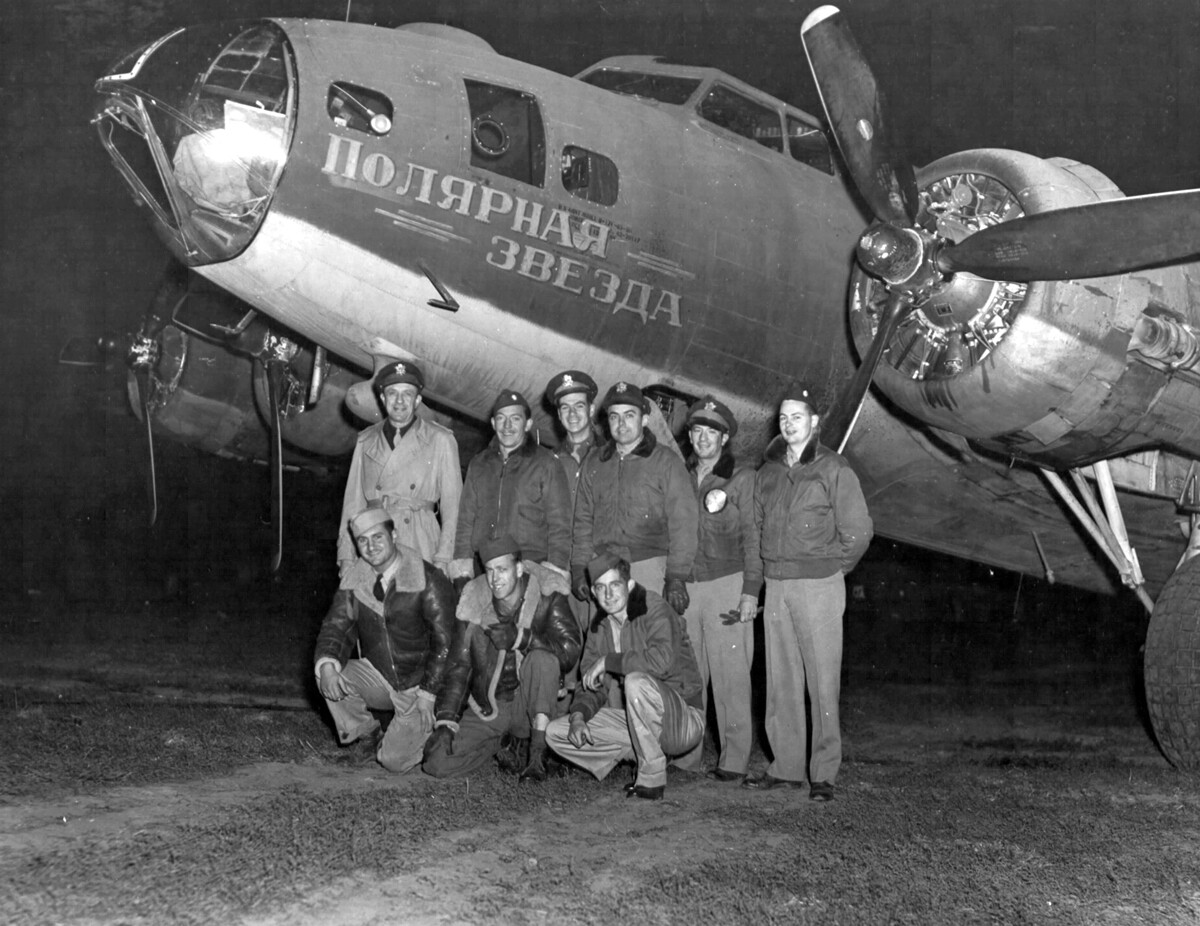
A Boeing B-17F at the Soviet air base in Poltava, 1944.
Archive photoHaving lost hope of receiving the B-17s from the U.S., Soviet troops began salvaging them themselves. Many ‘Flying Fortresses’ had to perform emergency landings on the territory of Eastern Europe. Despite the fact that they were damaged in the process and their secret equipment, according to orders, was blown up by the crew, Soviet specialists managed to systematically restore them.
The Americans knew about this practice, but didn’t react to it in any way. As a result, by the end of the war, the Red Army Air Force had several dozen B-17s at their disposal. However, these bombers didn’t get the chance to participate in any combat action.
If using any of Russia Beyond's content, partly or in full, always provide an active hyperlink to the original material.
Subscribe
to our newsletter!
Get the week's best stories straight to your inbox